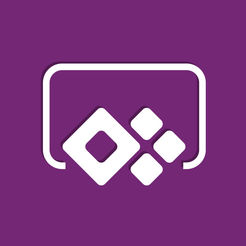 I am pleased to announce my latest Pluralsight course on Power Apps (Well…such is the nature of change in the cloud that there has already been a name change since I submitted this course for publication, only a few weeks back. The aspect of Power Apps covered in my course is now referred to as Canvas Apps.)
I am pleased to announce my latest Pluralsight course on Power Apps (Well…such is the nature of change in the cloud that there has already been a name change since I submitted this course for publication, only a few weeks back. The aspect of Power Apps covered in my course is now referred to as Canvas Apps.)
This course is designed for developers (both citizen and professional developers) interested in a low-code approach for building mobile applications.
Here’s some background on Power Apps, if you haven’t had a chance to play with it yet:
Power Apps is a productive low-code development platform. It allows you to very quickly build business applications that can run inside a web browser, on a phone or a tablet. Power Apps includes a web-based IDE (Power Apps Studio, a set of built-in cross-platform controls), an Excel-like expression language that also includes imperative constructs like variables and loops, and over 130 connectors to talk to any number of data sources — including SQL Server, Office 365, Salesforce, Twitter, etc. You can also use custom connectors to talk to your domain-specific data source.
Beyond the controls, language expression and connectors, Power Apps provides ALM support in the form of app versioning, app publication to various app stores, swim-lanes for development environments, authentication and authorization (via Azure AD), RBAC controls, and security polices like data loss prevention (DLP). All in all, the Power Apps service seeks to significantly lower the bar for building and distributing cross-platform mobile applications within your enterprise.
For a concrete example of our use of Power Apps, please read how we built a cross-platform event app in less than a week. Also please check out a recent episode of DotNetRocks where we talk about Power Apps.
Finally, as part of the latest spring update, Power Apps is combining with Dynamics 365 for Sales, Marketing, and Talent applications to offer an enterprise high-productivity application platform as a service (known as Microsoft Business Applications platform). What this means for Power Apps developers is that:
- They can now take advantage of server-side logic
- They have access to a data-centric way of building declarative apps, known as model-driven apps (in contrast to canvas apps, which are built by dragging and dropping controls to a canvas).
For more information on the spring update, please refer to this blog post by Frank Weigel.
I hope you will find this course useful. Please reach out to me via this blog or Twitter if you have any questions or comments.






